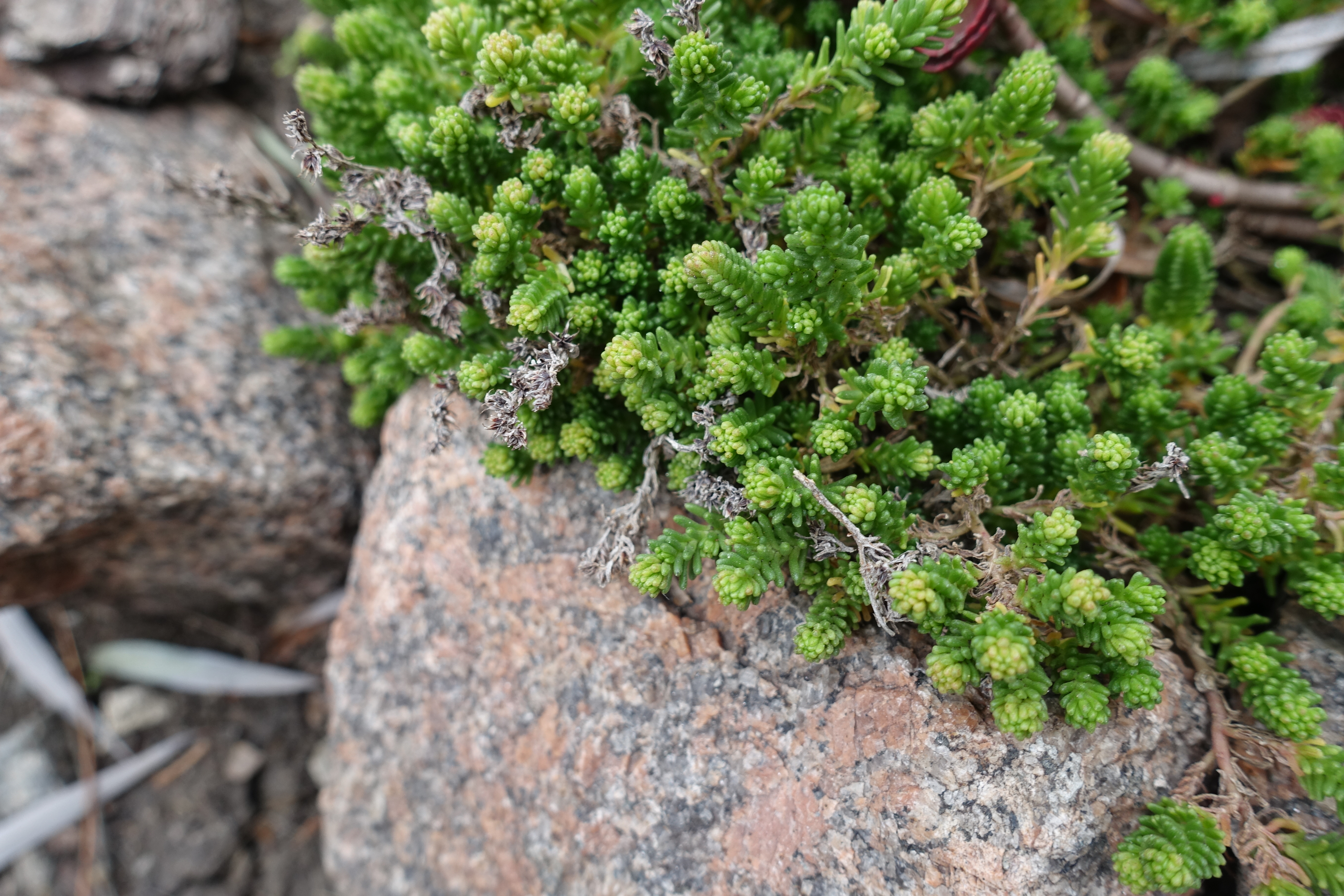Tasteless Stonecrop
(Sedum sexangulare)

Description
Sedum sexangulare, also known as tasteless stonecrop, is a species of succulent perennial and evergreen plant of the genus Sedum. It is similar to Sedum acre, but has shorter and denser leaves. It gained the binomial name ("six-angled") for its characteristic six spirals of leaves. S. sexangulare is about 15 cm (5 in) tall and is native to Europe and Asia, where it grows in the wild and is often cultivated as an ornamental plant. The plant needs wet or dry sandy soil and a sunny spot. It blooms in June and July with yellow, star-shaped flowers, which attract bees and other insects. Sedum is a large genus of flowering plants in the family Crassulaceae, members of which are commonly known as stonecrops. The genus has been described as containing up to 600 species, subsequently reduced to 400–500. They are leaf succulents found primarily in the Northern Hemisphere, but extending into the southern hemisphere in Africa and South America. The plants vary from annual and creeping herbs to shrubs. The plants have water-storing leaves. The flowers usually have five petals, seldom four or six. There are typically twice as many stamens as petals. Various species formerly classified as Sedum are now in the segregate genera Hylotelephium and Rhodiola. Sedum was first formally described by Carl Linnaeus in 1753, with 15 species. Of the genera encompassed by the Crassulaceae family, Sedum is the most species rich, the most morphologically diverse and most complex taxonomically. Historically it was placed in the subfamily Sedoideae, of which it was the type genus. Of the three modern subfamilies of the Crassulaceae, based on molecular phylogenetics Sedum is placed in the subfamily Sempervivoideae. Although the genus has been greatly reduced, from about 600 to 420–470 species, by forming up to 32 segregate genera, it still constitutes a third of the family and is polyphyletic. Distributed in mainly in temperate to subtropical climates the Northern hemisphere, extending to the Southern hemisphere in Africa and South America, being most diverse in the Mediterranean, Central America, Himalayas, and East Asia. In this respect, the two subgenera differ. Subgenus Sedum having a centre of diversity in Mexico, and Gormania in Eurasia with a secondary centre in N America.
Taxonomic tree:







